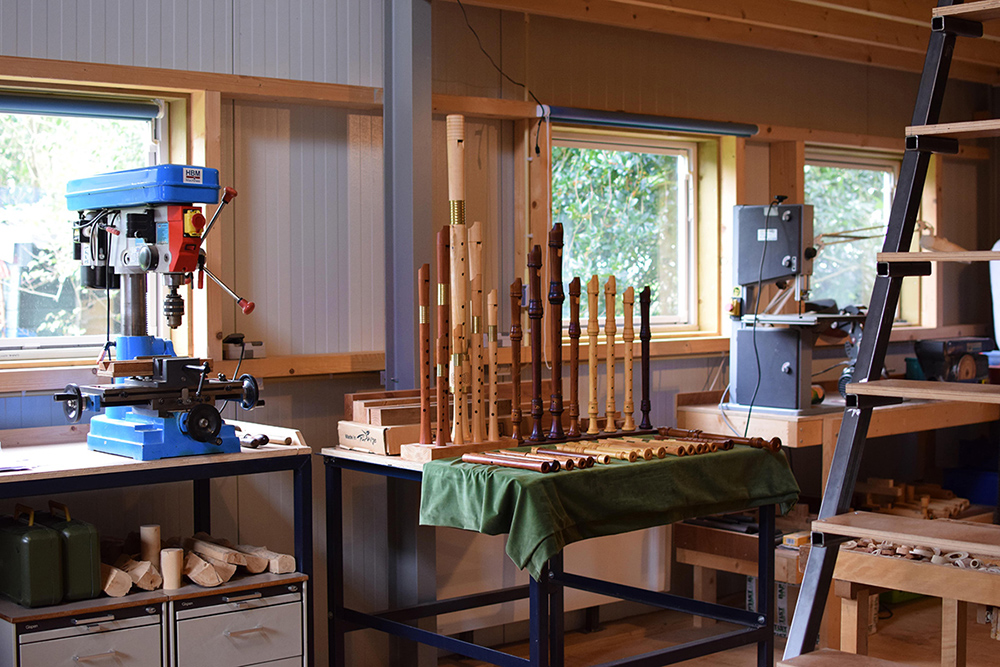My approach to recorder making |
Recorder making has always fascinated me. The different makers, historical models, the wide variety of woods, it was all very interesting to me, even as a young recorder player. So after finishing my history studies in 2014 I took a recorder making course and a few years later in 2018 I established my own workshop making recorders professionally. Having studied history in an academic setting allows me, almost paradoxically, to detach from history. I mean that I’m aware that we are living today, not in the past and are only capable of looking at the past in our own modern context. By definition we cannot exactly recreate the past because we live now. So trying to achieve this would be impossible. Bach’s music was not called early music or baroque music when he lived, but just ‘music’. So I make recorders that work optimal now playing music in a modern setting and answering to the wishes of the musicians of today. My recorders are performance instruments, maximizing the playing qualities, such as volume, dynamics, speech, range, etc.
This does not mean that I reject the past, on the contrary. The sources we have from the period 1400-1750 are a wonderful inspiration. Sometimes it can be very interesting to zoom in as closely as possible to achieve a certain musical goal. And sometimes zooming out can be more useful. This completely depends on the model and the wishes of the customer. I tend to adjust my voicing, model and tuning accordingly. An example: I made an early baroque soprano recorder in one piece, with a historical bore and historical fingering, including an open d, tuned in meantone temperament, for somebody that wanted to get as close as possible to a historical recorder. On the other hand I also made an early baroque style soprano for somebody that wanted to play Vivaldi concertos with modern strings. This soprano I made with my own bore design, double holes, modern fingering and equal temperament tuning. Both instruments are completely valid musical options to me. Both reflect a side of me: the history nerd and the experimental maker.

